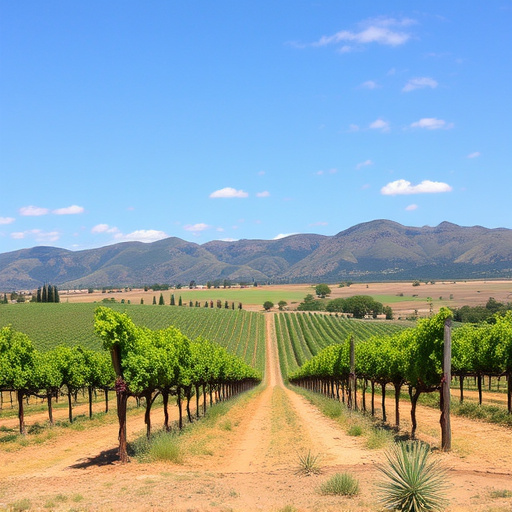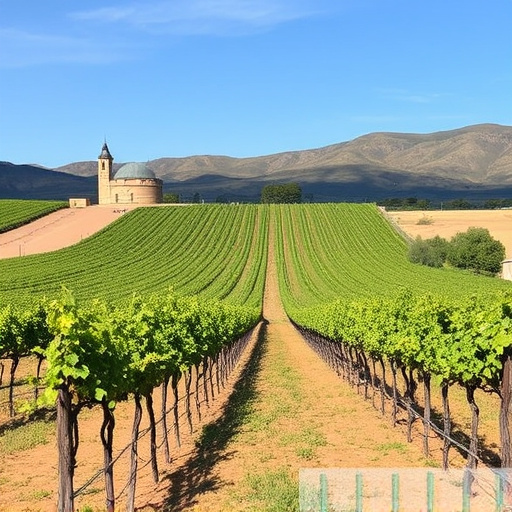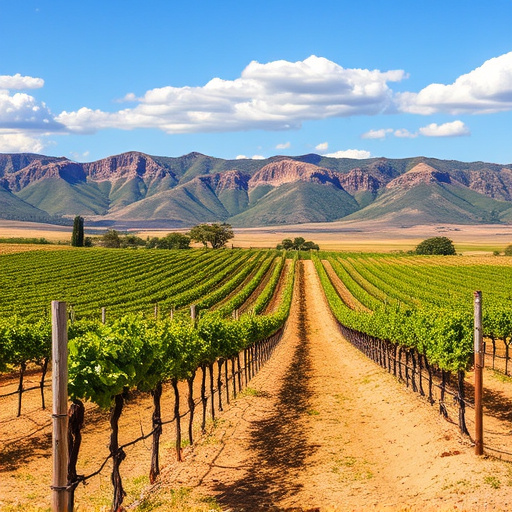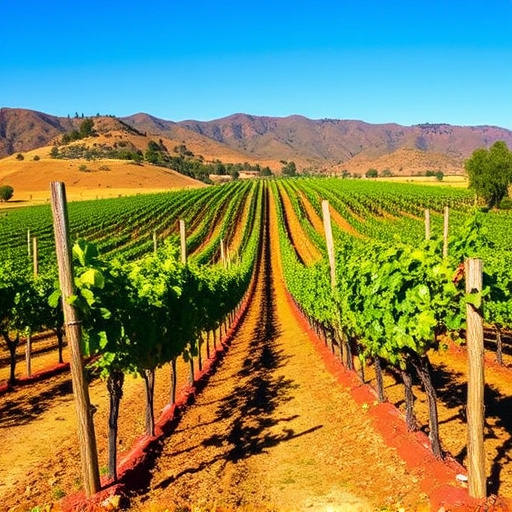Sonoita, Arizona, nestled in the Sonoran Desert at elevations exceeding 4,000 feet, is renowned for its unique vineyards producing distinctive wines. The region's long days and cool nights, coupled with diverse soil types, create ideal conditions for various grape varieties. Winemakers navigate the challenges of this rugged landscape to craft vibrant, complex wines showcasing the terroir. Diverse viticultural practices and soil types result in distinct wine profiles, from robust reds to crisp whites, attracting wine enthusiasts seeking unique flavors and aromas. The scenic landscapes and varying ambiances make Sonoita a thriving destination for wine lovers, foodies, and tourists eager to experience Arizona's vibrant vineyard scene.
Explore the enchanting world of high-elevation wines from Sonoita, Arizona, where neighboring estates craft unique and distinct offerings. This article delves into the secrets behind Sonoita’s vibrant vineyard landscape, comparing and contrasting key aspects that define their wines. From understanding the impact of elevation on grape growth to analyzing flavor profiles, we uncover what sets these nearby vineyards apart. Discover how location influences wine quality and contributes to the region’s growing tourism appeal.
- Understanding High Elevation Wine Production in Sonoita, AZ
- Key Differences Between Neighboring Vineyards
- Tasting Notes: A Comparative Analysis of Flavors and Aromas
- The Impact of Location on Wine Quality and Tourism in Sonoita
Understanding High Elevation Wine Production in Sonoita, AZ

Sonoita, Arizona, nestled in the heart of the Sonoran Desert, is a unique wine-producing region known for its high-elevation vineyards. At elevations often exceeding 4,000 feet, Sonoita’s vineyards benefit from longer days, cooler temperatures, and distinct microclimates, all of which contribute to the distinctive character of the wines produced here. This high-altitude environment presents both challenges and opportunities for winemakers, who must adapt their practices to thrive in this rugged landscape.
The cool nights and warm days allow grapes to ripen slowly, concentrating flavors and producing wines with vibrant acidity. The region’s diverse soil types—from sandy loams to volcanic soils—add further complexity, as each varietal expresses its unique personality. Sonoita’s vineyards are home to a variety of grape varieties, from traditional European options like Cabernet Sauvignon and Merlot to more heat-loving choices such as Zinfandel and Syrah, all of which find their ideal growing conditions in this remarkable desert setting.
Key Differences Between Neighboring Vineyards

In the vibrant landscape of Sonoita, Arizona, neighboring vineyards offer a fascinating contrast in viticultural practices and wine profiles. One notable difference lies in their elevation; some estates sit at higher elevations, benefiting from cooler temperatures that slow down grape ripening, while others enjoy lower elevations with warmer climates, hastening it. This disparity significantly impacts the varieties cultivated and the flavor characteristics of the resulting wines. For instance, high-elevation vineyards often excel in growing grapes like Syrah and Tempranillo, known for their robust flavors and complex aromas, whereas lower-elevation sites may favor Chardonnay and Sauvignon Blanc, renowned for their crisp acidity and refreshing notes.
Moreover, the soil types vary across these neighboring estates, adding another layer to the wine’s identity. Higher elevations often have well-draining, mineral-rich soils, contributing to wines with a distinctive earthy undertone and vibrant acidity. In contrast, lower elevations may boast richer, more fertile soils that result in fuller-bodied wines with brighter fruit flavors. These variations create a diverse range of vino experiences within the Sonoita AVA, offering wine enthusiasts a unique opportunity to explore and appreciate the region’s terroir through their glasses.
Tasting Notes: A Comparative Analysis of Flavors and Aromas

When comparing high elevation wines from neighboring Sonoita estates, one can’t help but notice a distinct flavor profile that sets them apart from their lower-altitude counterparts in AZ. The unique terroir of these vineyards, characterized by volcanic soils and sun-kissed exposure, translates into intriguing aromas and tastes. Tasting notes often reveal a vibrant array of flavors, with hints of bright red fruits like cherry and cranberry, complemented by earthy undertones reminiscent of spice and herbs.
The aromas from these high elevation wines are equally captivating, showcasing a balance between fruity notes and subtle floral or herbal nuances. Many tasters appreciate the crisp acidity and firm tannins that define these wines, making them particularly refreshing and food-friendly. This comparative analysis highlights the impact of elevation on wine characteristics, offering a delightful exploration for connoisseurs and a fascinating insight into the diverse offerings of Sonoita’s vineyards.
The Impact of Location on Wine Quality and Tourism in Sonoita

The unique microclimates and diverse soil compositions of neighboring Sonoita estates play a pivotal role in shaping the character and quality of their wines. Located in the heart of Arizona’s Sonoran Desert, these vineyards benefit from high elevations, which contribute to cooler temperatures during vital growing seasons. This moderate climate allows for slower ripening of grapes, resulting in more complex flavors and higher acidity levels—key attributes sought after by wine enthusiasts.
The impact extends beyond wine quality; it drives tourism in the region. The scenic landscapes of Sonoita’s vineyards attract visitors seeking not only exquisite beverages but also memorable experiences amidst picturesque terrains. Each estate offers a distinct ambiance, from rustic charm to modern amenities, enhancing the overall visitor journey. As a result, the area has become a thriving destination for wine lovers, foodies, and those seeking to immerse themselves in Arizona’s vibrant vineyard scene.
High elevation wines from Sonoita, AZ, offer a unique and diverse experience for wine enthusiasts. By comparing neighboring estates, we’ve highlighted key differences in production methods and the resulting flavors, aromas, and overall quality. These variations showcase the distinct character of each vineyard, contributing to Sonoita’s growing reputation as a premier wine-producing region. The article underscores the impact of location on wine excellence and the potential for enhanced tourism, making Sonoita a must-visit destination for those passionate about both wine and natural landscapes.
